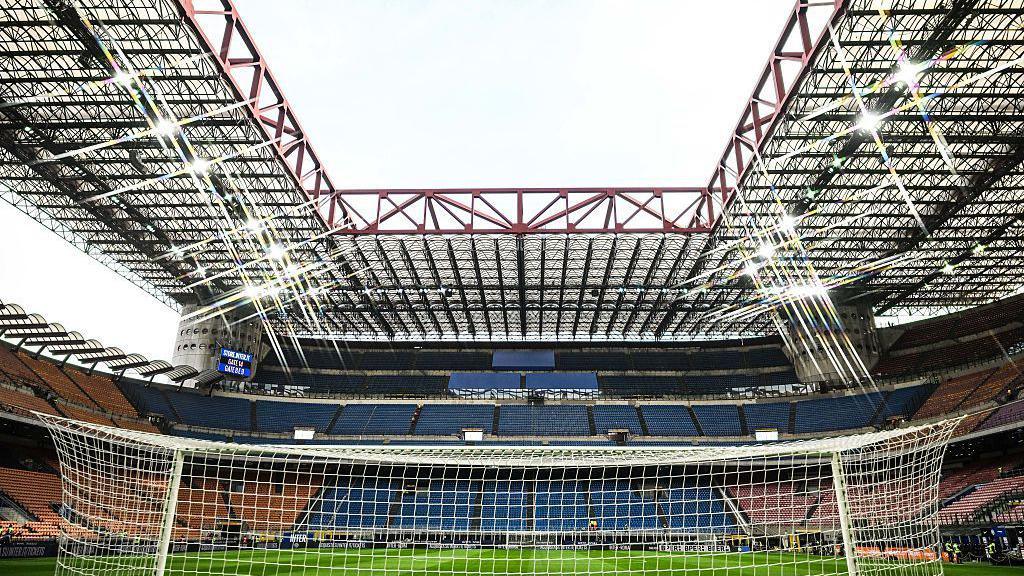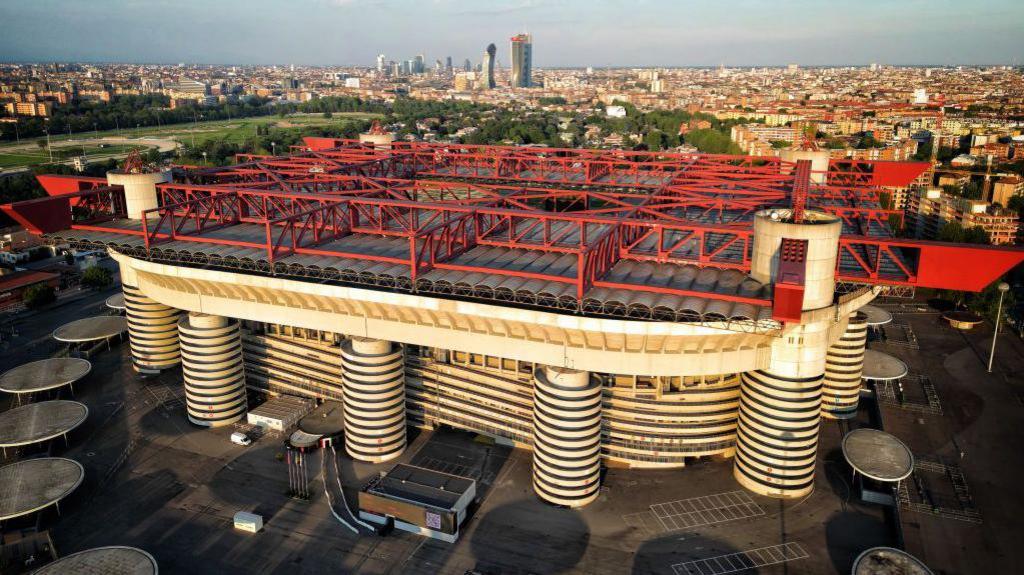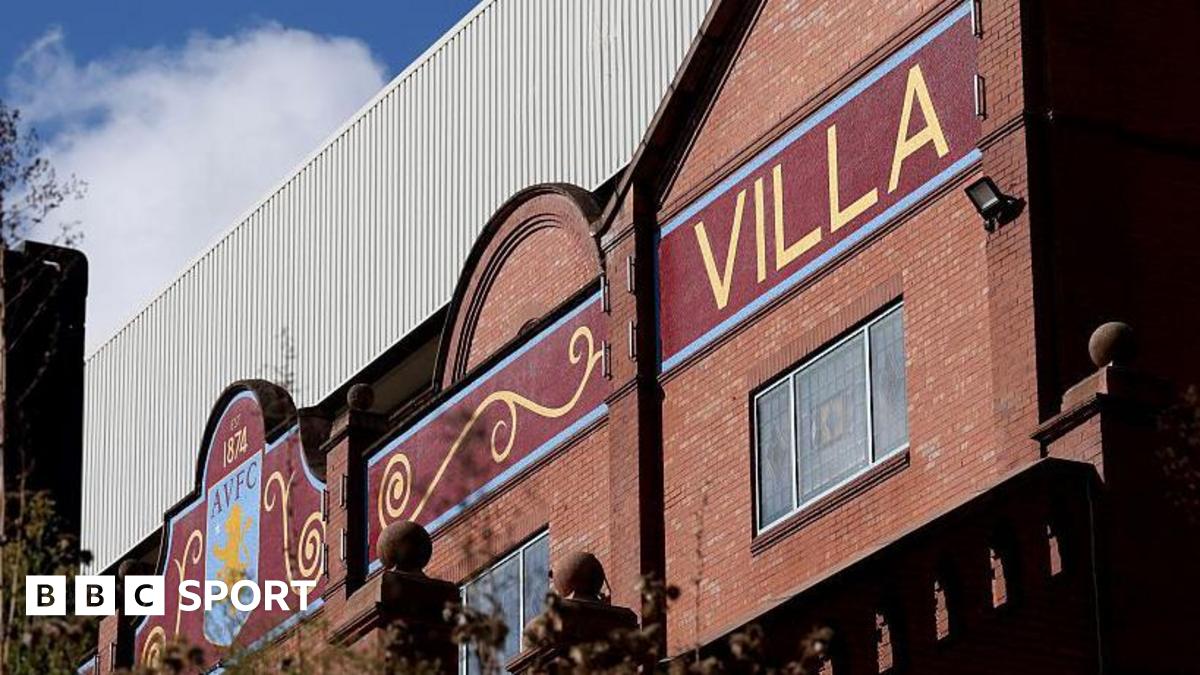 Image source, Getty Images
Image source, Getty Images
Having hosted its first football match 99 years ago, San Siro is set to be knocked down
ByDaniel Austin
BBC Sport senior journalist
AC Milan and Inter have finalised the purchase of their San Siro stadium and confirmed plans to demolish and replace it with a 71,500-capacity arena.
The demolition of San Siro, widely regarded as one of the world's most prestigious football stadiums, has been mooted for years as its condition has deteriorated over time.
Now the two clubs, who have shared the stadium since 1947, have paid €197m (£173m) to the city council to take control of the structure and surrounding land, which they say is a sign of "shared ambition for long-term success".
The new stadium will have a capacity of roughly 4,000 fewer seats than the current San Siro and will be designed by firms operated by Sir Norman Foster and David Manica, who played crucial roles in the planning of the new Wembley Stadium.
BBC Sport has spoken to key figures and finance experts in order to determine whether the move makes sense and find out if it could help two of Europe's most famous clubs compete regularly against the more wealthy Premier League sides.
Why do Milan and Inter want a new stadium?
"For us, this a historic moment," says Milan chairman Paolo Scaroni. "It has taken five or six years to reach this point and we had great support from our owners RedBird.
"San Siro has been excluded by Uefa as a stadium for Euro 2032 – it simply doesn't have all the facilities that are needed for modern football. We badly need a new stadium.
"We have always had a good relationship with Inter, so it makes sense to continue sharing the new stadium and split the costs of building and running it."
Though designs will only be published in the first half of 2026 and no completion date has been set, the purchase of the stadium is a crucial step as both clubs aim to return to past glories.
In the late 1990s and early 2000s, Serie A was the world's pre-eminent football league. Its clubs spent the most money, bought the best players and attracted the attention of fans around the globe.
But over the past 20 years, the division has undergone a steady decline. Its clubs' performances have dwindled at the elite European level, average attendances at stadiums have dropped significantly and even its most illustrious teams are typically spending less each summer than lower and mid-table Premier League teams.
The long-term drop-off can be tracked by glancing at Milan and Inter's results in the Uefa Champions League since it was rebranded in 1992.
Despite Inter reaching two finals in recent years, they last won it in 2010 and Milan most recently in 2007, even though only Real Madrid have won the competition more times in total than the Rossoneri.
But what has been behind those diminishing results?
Finance has played a key role. There have been 12 changes of prime minister in Italy since 2000 and its economy has endured regular turmoil.
Milan and Inter have also undergone a series of destabilising ownership changes, both passing from Italian businessmen to Chinese ownership before being bought by respective American investment vehicles in the past few years.
"The political and financial crises that have hit Italy have weakened the country's business fabric and the ownership structures that made Serie A prestigious and successful," says Marco Bellinoza, business journalist at Il Sole 24 Ore.
"Economic and political weakness has impeded the growth of top-level football. Only with the transition to the current US ownership is the transformation from non-self-sufficient sports clubs to fully-fledged businesses taking place."
While TV rights have generated enormous broadcast revenues for Premier League sides, the same income stream has lagged far behind in Italy, setting its clubs back.
"Serie A is €4bn (£3.5bn) behind the Premier League in terms of total cumulative revenue for its clubs and that is principally down to the broadcast contracts," explains Dan Plumley, sport finance professor at Sheffield Hallam University.
"That's a gap you can't really catch up, so they've got to look to grow revenue in other ways."
According to Uefa, Milan and Inter ranked 13th and 14th respectively for revenue earned by European clubs in 2024. Each brought in just over £350m, around half as much as the likes of Manchester City and Manchester United, and only a few tens of million more than Newcastle, Aston Villa and West Ham.
In the 2020s so far, 12 Premier League clubs have spent more on transfers than Milan and 14 have spent more than Inter.
"The whole of Italian football is lagging behind the Premier League - when there is a new good player they tend to go and play in the Premier League simply because they are better paid," Scaroni adds.
What does demolishing San Siro mean for legacy?
Il Duomo might be Milan's most popular tourist attraction but San Siro is a football cathedral in its own right, steeped in a century of history having played host to some of the most celebrated players of all-time.
Previous reports of its demise have been met with anguish from players and fans around the world.
"Playing at San Siro is full of challenge, emotion and history", says Andriy Shevchenko, who won the Ballon d'Or during the seven years he played for Milan.
"My relationship with San Siro started when I was 14 and played a youth tournament there with Dynamo Kyiv. As soon as I walked in there I had a special feeling.
"I love San Siro. The fans make the stadium so special. But I think this is a very important step for the future of Milan and Italian football.
"The design is going to be very important because if you respect the tradition and legacy of San Siro and the legends who played there to the maximum, you're not going to lose it. You can do something really positive because nothing lasts forever."
 Image source, Getty Images
Image source, Getty Images
San Siro may be lauded around the world but its outdated facilities include toilets that have become dilapidated
Can a new stadium really be their saviour?
Only nine football stadium infrastructure and renovation projects have been undertaken in Italy in the past decade, according to data from PwC, compared to 24 in the Premier League, 19 in the German Bundesliga, 15 in Spain's La Liga and 10 in French Ligue 1.
That has left Italy with outdated matchday facilities across the country and average attendances have dwindled to 81%, far less than the Premier League's 97%.
Milan is not just a European fashion capital but the financial and industrial fulcrum of Italy, with most major banks and companies headquartered in the city.
Scaroni estimates that the project will cost around €1.5bn (£1.3bn) and says roughly one in seven tickets in the stadium will be for corporate hospitality, while there will be a greater focus on hosting non-football events.
"Building a new stadium is about what they can do with that stadium outside of the traditional match day - partnership deals with other sports, putting on concerts, turning the stadium into a 365-day-a-year venue," Plumley says.
"Of course San Siro is iconic but for these two clubs, change simply has to happen."

 2 hours ago
3
2 hours ago
3

















































